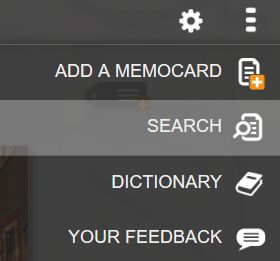Piotr Wozniak, 1990
Optimization of Learning, Master’s Thesis defended at the University of Technology in Poznan, summarizes the early work over SuperMemo, development of the first versions of SuperMemo for DOS, and includes a couple of words from the author about the future of spaced repetition in education.The original and full text of the dissertation can be found on SuperMemo CD-ROMs (incl. Cross Country, Video English, Deine Chancen, MegaMix 99, and Advanced English 97). The table of contents listed below links to texts that have been corrected and updated for publication at supermemo.com. In particular, the following changes have been introduced: Summary has been corrected and updated with new terminology Simulation of the learning process has been updated and the overestimated forgetting rate figures have been removed Using SuperMemo without a computer describes the same method but the text is taken from SuperMemo 6 User’s Guide (Biedalak K., Murakowski J., Wozniak P.) Two variables of memory and References are linked to newer texts
| Optimization of learning |
University of Technology in Poznan
Computer Science Center
specialization: Programming Techniques and Information Systems
individual specialization: Application of Computers in Human Biology
Piotr A.Wozniak
Optimization of learning
A new approach and computer application
Master’s Thesis
Supervisor:
Prof. Zbigniew Kierzkowski
Poznan 1990
Contents
1. Introduction
Readers guide
2. General principles of the SuperMemo method (for an up-to-date text see: General principles of SuperMemo)
3. Account of research leading to the formulation of the SuperMemo method
3.1. Approximate function of optimal intervals
- Experiment on the influence of various repetition spacing patterns on the effect of repetitions on knowledge retention (Jan 31, 1985 – Aug 2, 1986)
- Experiment intended to approximate the length of optimal inter-repetition intervals (Feb 25, 1985 – Aug 24, 1985)
- Algorithm SM-0 used in repetition without a computer
3.2. Application of a computer to improve the results obtained in working with the SuperMemo method (Algorithm SM-2 used in the computer-based variant of the SuperMemo method and involving the calculation of easiness factors for particular items)
3.3. Further improvement of SuperMemo method: modification of the function of optimal intervals
3.4. Further improvement of SuperMemo: introduction of the matrix of optimal factors
3.5. Random dispersal of optimal intervals
3.6. Improving the predetermined matrix of optimal factors
3.7 Propagation of changes across the matrix of optimal factors
3.8 Evaluation of the Algorithm SM-5
3.9. Forgetting rate in case of the cessation of repetitions
3.10. Interim summary: SuperMemo development steps
4. Description of an exemplary software implementation of the SuperMemo method (for an up-to-date listing see SuperMemo software development)
5. Simulation of the learning process conducted along the SuperMemo schedule (text updated in 1998)
5.1. Measurement of workloads related to the maintenance of a constant-sized database
5.2. Measurement of the progress of a student who works the same amount of time everyday
5.3. Measurement of the forgetting rate after ceasing repetitions
6. Strategic prerequisites of effective work with SuperMemo
7. Using SuperMemo without a computer
8. SuperMemo in the eyes of users (opinions collected from the first 20 students who used SuperMemo)
9. Application of SuperMemo in procedural learning
9.1 SuperMemo-based touch typing training
9.2. Drum training based on the SuperMemo method
10. Physiology and Biochemistry of Memory in the Light of the SuperMemo Method
10.1. Location and character of memory
10.2. Procedural and declarative learning (original title: Stochastic and deterministic learning)
10.2.1. Hypothetical model of procedural learning (original title: Hypothetical model of stochastic learning)
10.2.2. Hypothetical model of declarative learning (original title: Hypothetical model of deterministic learning)
10.3. Molecular basis of neuronal plasticity
10.4. Molecular model of memory comprising elements of the SuperMemo theory
- 10.4.1. Biological interpretation of E-Factors
- 10.4.2. Two variables of memory: strength and retrievability
- 10.4.3. Molecular changes in synapses that correspond to variables of memory
11.Model of intermittent learning
11.1. Formulation of the problem of intermittent learning
11.2. Solution to the problem of intermittent learning
11.3. Interpretation of the forgetting curve
11.4. Verification of the model of intermittent learning.
12. A vision of modern education based on SuperMemo
- Universal nature of the process of time-optimal learning
- Most difficult application areas
- Creative thinking
- Prcis
- Further research
- Interim summary
Epilogue
Glossary (for updated terminology see: Glossary 2000)
Summary (text updated and corrected in 1997)
References
Suggestions for further reading



